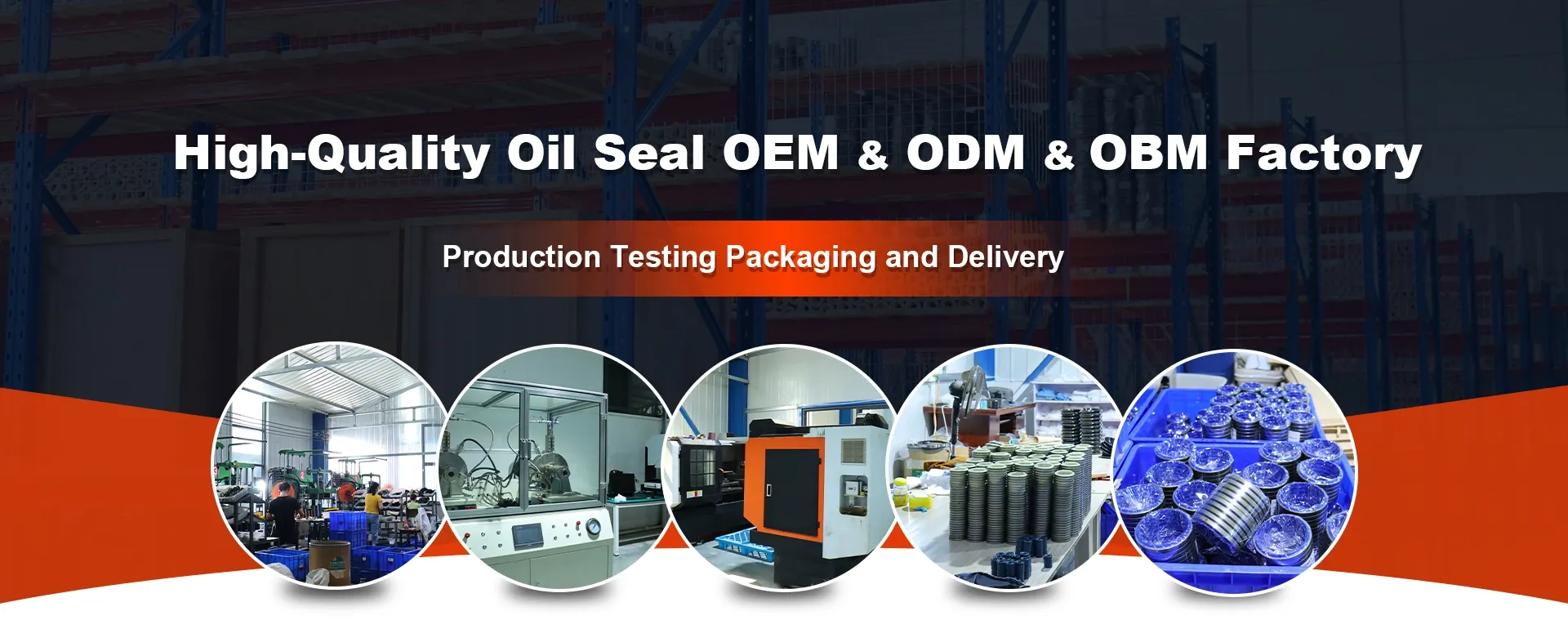नोव्हेंबर . 17, 2024 02:27 Back to list
Choosing the Right Hydraulic Oil Seal for Optimal Performance and Longevity
Understanding Hydraulic Oil Seals Essential Components in Hydraulic Systems
Hydraulic oil seals are critical components in hydraulic systems, playing a pivotal role in ensuring the efficient operation and longevity of machinery. These seals are designed to prevent the leakage of hydraulic fluids, which are crucial for transferring power in various equipment, from construction machinery to automobile systems. Understanding the significance, design, and maintenance of hydraulic oil seals can significantly enhance the performance and reliability of hydraulic systems.
What are Hydraulic Oil Seals?
Hydraulic oil seals, also known as hydraulic seals, are mechanical components that fill the gap between two moving parts to prevent the escape of hydraulic fluid and protect the internal components from contamination. Typically made of durable materials such as rubber, polyurethane, or composite materials, these seals are engineered to withstand high pressure and temperature fluctuations within hydraulic systems.
Importance of Hydraulic Oil Seals
1. Leak Prevention One of the primary functions of hydraulic oil seals is to prevent leaks. Fluid leakage can lead to loss of pressure and efficiency in hydraulic systems, resulting in suboptimal performance and increased wear on machinery parts.
2. Contamination Protection Hydraulic systems are often exposed to dust, dirt, and moisture, which can contaminate the hydraulic fluid. Oil seals act as barriers to keep these contaminants out, thereby maintaining the purity of the fluid and the overall efficiency of the system.
3. Cost Efficiency By ensuring airtight seals, hydraulic oil seals help in reducing maintenance costs and preventing damage to equipment. Preventing leaks conserves hydraulic fluid, ultimately saving money and resources in the long run.
Types of Hydraulic Oil Seals
There are various types of hydraulic oil seals, each designed for specific applications and environmental conditions. Some common types include
hydraulic oil seal

- O-Rings These are circular seals that fit into grooves and create a tight seal when compressed. They are commonly used for static sealing applications.
- U-Cups These seals are shaped like a “U” and are often used in dynamic rod sealing applications where the sealing lip is designed to mold against the rod's surface.
- V-Rings V-rings are axial seals that prevent dirt and other contaminants from entering while maintaining lubrication. They are often used in rotary applications.
Maintenance of Hydraulic Oil Seals
Proper maintenance of hydraulic oil seals is essential for ensuring their optimal performance. Here are some key practices
1. Regular Inspections Frequently check for signs of wear or damage. Look for fluid leakage or physical deformities in the seals that may indicate it's time for replacement.
2. Proper Installation Ensure seals are installed correctly to prevent leaks. Misalignment or damage during installation can compromise their integrity.
3. Use Quality Fluids Utilize high-quality hydraulic fluids compatible with the seals to avoid chemical degradation over time.
In conclusion, hydraulic oil seals are vital components in hydraulic systems, serving to prevent leaks and protect against contamination. By understanding their function, types, and maintenance practices, operators can enhance the efficiency and reliability of their hydraulic systems, contributing to better operational performance and reduced costs in the long run. Ensuring the integrity of hydraulic oil seals is not just a matter of performance, but also a commitment to maintaining the overall health of machinery.
-
TCN Oil Seal Metal Ring Reinforcement for Heavy Machinery
NewsJul.25,2025
-
Rotary Lip Seal Spring-Loaded Design for High-Speed Applications
NewsJul.25,2025
-
Hydraulic Cylinder Seals Polyurethane Material for High-Impact Jobs
NewsJul.25,2025
-
High Pressure Oil Seal Polyurethane Coating Wear Resistance
NewsJul.25,2025
-
Dust Proof Seal Double Lip Design for Construction Equipment
NewsJul.25,2025
-
Hub Seal Polyurethane Wear Resistance in Agricultural Vehicles
NewsJul.25,2025
-
The Trans-formative Journey of Wheel Hub Oil Seals
NewsJun.06,2025
Products categories
















